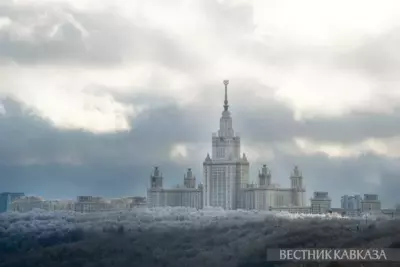Iran is currently producing 3.9 million b/d of crude, oil ministry news agency Shana reported late Wednesday, citing the country's petroleum minister. Speaking on the sidelines of a government cabinet meeting Wednesday, Bijan Zanganeh indicated that Iran was closing in on its target of restoring output to the level of 4 million b/d the country produced before the 2012 imposition of international nuclear sanctions specifically targeting Iran's petroleum and financial sectors, while exceeding its deemed OPEC production ceiling of just under 3.8 million b/d following the group's decision in November to cut output by about 1.2 million b/d.
Zanganeh's latest estimate of Iranian crude production closely follows news Tuesday that two Iranian VLCCs were heading towards Rotterdam for the first time in five years to offload 4 million barrels of crude next month at the Dutch port. Trading sources said the 317,367 dwt VLCC Huge (2008-built) and 318,021 dwt VLCC Snow (2012-built) would be arriving around February 7 and February 11 respectively to unload a mix of Iranian heavy and light crude grades at Rotterdam. Currently, both the Panama-flagged Iranian VLCCs are located in the South Atlantic, after passing through the Cape of Good Hope, according to S&P Global Platts trade flow software cFlow. In 2012, the EU banned imports of Iranian crude by its member countries and also the provision of EU-linked insurance, including protection and indemnity cover for any shipments of Iranian crude, regardless of destination.

Rising exports
However, Iranian crude exports are now on the rise. In September, Iranian VLCC departures hit their highest level since sanctions were lifted a year ago, according to cFlow. Iran is targeting oil production of 4 million b/d by the end of this Iranian year (March 20, 2017), supported by plans to launch in October its first bid round for oil and gas development contracts using a newly revised upstream contract. The Iranian oil ministry had said that in September 2016 the the country's oil production had reached 3.85 million b/d.
Zanganeh's statement Wednesday indicated a further 500,000 b/d rise in production even other major oil producers from within and outside OPEC make cuts after 24 producers, including Iran, agreed in December to cut around 1.8 million b/d of total crude output from January for six months. The output cuts largely revolve around medium to heavy sour crude grades, with a number of OPEC producers, especially Saudi Arabia, informing their customers that they would potentially affect term loadings.
Iran, while a member of OPEC, is allowed as part of the related OPEC deal to increase its production slightly to 3.797 million b/d, after producing 3.72 million b/d in December, secondary sources said

Oil development framework deals confirmed
Zanganeh confirmed Wednesday that an international consortium comprising France's Total, China National Petroleum Corp. and Iran's Petropars had signed a heads of agreement for developing Phase 11 of the huge South Pars offshore gas field, Shana reported. Another heads of agreement had been signed with a local company, Persian Oil and Gas Co., for developing the major Yaran, Maroon and Koupal onshore oil fields in Iran's Wes Karoun region, he added. All four fields fall in the category of "shared fields," due to their extension across international borders, to which the ministry has assigned top priority for development.
South Pars, containing large volumes of condensate in addition to an estimated 500 Tcf of gas reserves, or about half Iran's total proved gas reserves, straddles the country's Persian Gulf maritime border with Qatar and is part of the world's largest conventional gas reservoir. Qatar calls its side of the deposit North Field. Gas production from South Pars stood at around 500 million cu m/d in early January, up from 285 million cu m/d at the end of 2013, and Iran has announced plans to add another 45 million cu m/day before the end of March. Much of the condensate produced from the field is blended with heavy Iranian crudes for export. The three oil fields mentioned Wednesday by Zanganeh are located in Iran's West Karoun region and straddle the country's land border with Iraq. In 2016, about 225,000 b/d of crude was being produced from West Karoun fields, which also include the giant South and North Azadegan and Yadavaran fields. The ministry is seeking to raise that to 315,000 b/d by March. National Iranian Oil Co. managing director Ali Kardor said Tuesday that NIOC would issue a tender for the development of South Azadegan in the "near future."






